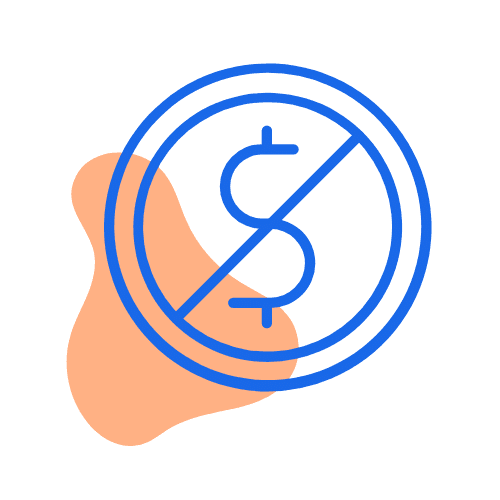
First homebuyer e-course
Sign up for our FREE 8-week course to get on the property ladder.
If you’re trying to get a home loan, you can speed up the process by having everything organised before you apply. This means making sure you have all your supporting documents in order, from proof of identity to payslips, bank statements and details about the property you're buying.
Here's a quick rundown of the documents most borrowers need:
This guide will help you put together your supporting documents and get your home loan application sorted as quickly as possible.
Any lender you go through will have identification requirements. This means you’ll have to provide 100 points of ID in the form of either two primary identification documents or one primary and one or more secondary identification documents. The tables below outline what documents are considered primary and secondary options, and how many points they are worth.
| Primary documents | Points |
|---|---|
| Birth certificate | 70 points |
| Name change certificate | 70 points |
| Current passport | 70 points |
| Expired passport that was not cancelled and was current within the preceding two years | 70 points |
| Citizenship certificates | 70 points |
| Diplomatic documents and official documents issued to refugees | 70 points |
| Secondary documents | Points |
|---|---|
| Driver’s licence | 40 points |
| State or Territory issued photo ID card | 40 points |
| Photo ID issued by tertiary education institute | 40 points |
| Photo card issued by banking institution where you have been a customer for at least 12 months | 40 points |
| Public service ID card including your photo and signature | 40 points |
| Licence or permit issued by State, Territory or Commonwealth government, such as a boating licence | 40 points |
| Letter confirming your identity from referee you’ve known for at least 12 months | 40 points |
| Mortgage documents | 35 points |
| Council rates notice | 35 points |
| Credit card statement | 25 points |
| Foreign driver’s licence | 25 points |
| Medicare card | 25 points |
| Credit card (must have name and signature) | 25 points |
| Utility bill with name and current address | 25 points |
| EFTPOS card (must have name and signature) | 25 points |
If you can’t produce 100 points of identification using the documents above, talk to your lender or mortgage broker as there might be other forms of documentation you can use.
There are also some scenarios where you may not need to provide identification documents. For example, if you’re applying for a home loan from a lender with which you already have a transaction account, personal loan, savings account or other products, you will have already gone through the identification process and may not have to do it again.
Some lenders may use an identity verification service instead of requiring you to submit documents. Identity verification services like ZipID will send someone to you and they will check your ID (a passport or driver's license) and have you sign a form. It's a simple process and only takes a few minutes.
You can prove your income in different ways depending on your employment circumstances. If you’re a PAYG employee, the process is relatively straightforward. If you’re a casual worker or are self-employed, however, you might need a different set of documents.
As a PAYG employee, you’ll have to provide a recent payslip (in most cases no older than two months) stating your year-to-date (YTD) income. Some lenders might ask for multiple payslips, so check each individual lender’s requirements. If you can’t track down your recent payslips, most lenders will also accept the past three months’ worth of bank statements showing your salary going into your account. Some lenders will also accept an employment contract and letter from your employer stating your current base wage, or a tax return that’s prepared by a tax agent.
If you’re a casual worker, you’ll need to provide last financial year’s notice of assessment from the ATO.
Self-employed borrowers generally need to seek out low documentation, or low doc, loans. This term can be somewhat misleading, as the amount of documentation you need is not generally less than with traditional home loans. You just need to produce different documentation. Instead of PAYG statements, you can provide your lender with your most recent notice of assessment from the ATO.
Lenders will also want to see tax agent prepared business and individual tax returns from the last financial year. Some lenders might also accept a letter from your accountant or a Business Activity Statement (BAS).
If you have multiple forms of income, you’ll have to provide documentation for each source. The type of documentation required will depend upon the type of income.
| Response | Female | Male |
|---|---|---|
| In a branch | 51.02% | 50.67% |
| Online | 35.76% | 35.45% |
| Other | 6.27% | 6.36% |
| Over the phone | 4.92% | 4.62% |
| Via an app | 2.03% | 2.89% |
A lender will not only want to see your income, but also your assets and liabilities in order to assess your full financial position. This will give them a better idea of whether or not you’re a credit risk. Put simply, assets are anything you own, while liabilities are anything you owe.
Assets could be other properties, vehicles, term deposits or high interest savings accounts. You’ll need to provide documentation, such as your vehicle registration or any relevant bank statements, for each asset you list on your application.
Details about your assets are important because lenders want to see that you have enough money for a deposit and have a history of genuine savings. You’ll also need to provide your potential lender with bank statements if your savings account is with a different financial institution.
Liabilities are any outstanding debts or ongoing payments for products such as personal loans, vehicle loans, credit cards or store cards. You’ll need to bring statements that show the current outstanding balance for each liability. For credit cards and store cards, you can provide your most recent statement. For loans, you should provide your last three statements.
If you're buying a home or an investment property your lender needs the property address to process the application. You will also need:
If you're a refinancer, the lender will also want to see a certificate of currency. The lender may also require a recent council rates notice.
As a first home buyer you may be eligible for first home owner grants or concessions. This may not require documents from you, but it's something your lender and conveyancer need to know. The lender usually lodges a grant application form on your behalf.
If you are buying a home with a parental guarantor then you need to provide extra documents. This includes information about the guarantor's assets and liabilities, including credit card and loan account statements.
As a first home buyer you may have to sign a statutory declaration if you're taking advantage of the First Home Loan Deposit Scheme or declaring that money in your account has been gifted to you by a family member.
If you're refinancing your existing mortgage with a new lender you will obviously need to provide details about that loan. You'll also need to provide all the documentation mentioned above to establish your income, assets and debts. This is because your new lender can't simply take your current loan as proof you can handle the new one. It needs to verify your current financial situation.
Investors need to support their loan application with extra documents such as:
Image: Shutterstock




Obtaining home loan pre-approval from a lender is an important step in the home buying journey. Find out what’s involved in the process here.
When you apply for a home loan, a lender will take many serviceability factors into consideration when deciding whether or not to approve your application.
When you apply for a home loan, the lender will assess a range of factors to determine whether or not you can afford to repay the money you borrow.
Here are loads of expert tips to help you borrow what you need for your home or investment property, without breaking the bank.
Find out how to increase your borrowing power and get approved for a mortgage even if you have a car loan.
This guide explains how a HECS-HELP debt can lower your serviceability potential for a home loan.
Leanr why your lender may request a certificate of currency to advance your home loan and how much it could cost you.
Many lenders will require a letter of employment from your employer. Make sure your letter has everything required in it.
We speak to the experts about how your credit score impacts your home loan application.

Sign up for our FREE 8-week course to get on the property ladder.

Get a home loan with a low deposit.

Pay less for your home loan with a super-low interest rate.

Save on your investment loan with these hot offers.